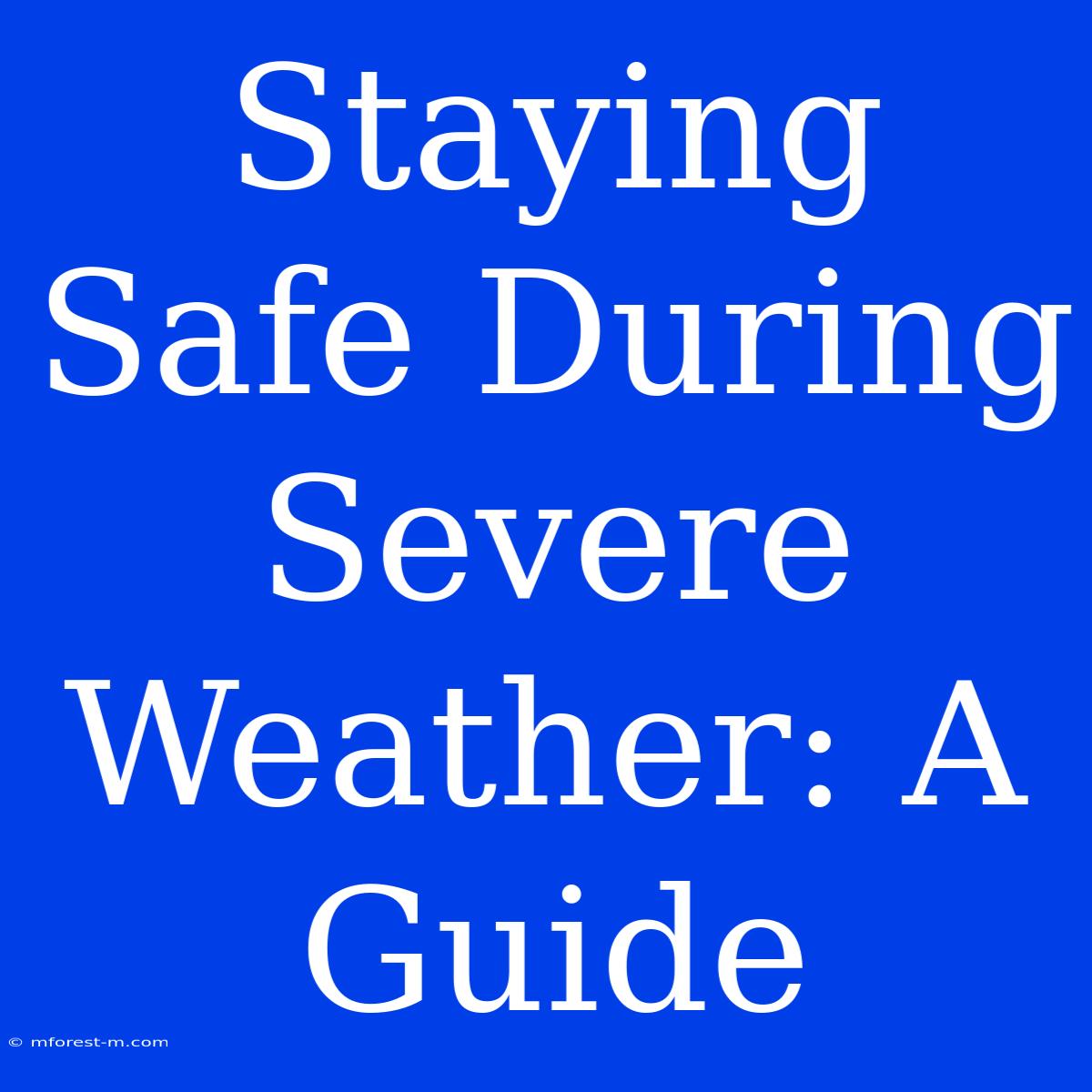Staying Safe During Severe Weather: A Comprehensive Guide to Protection and Preparedness
Are you ready for the next big storm? Staying safe during severe weather is crucial for protecting yourself and your loved ones. This guide will equip you with the knowledge and tools to prepare for and navigate through severe weather events, minimizing risks and ensuring safety.
Editor Note: This guide has been published today to help you understand and navigate the dangers of severe weather events.
Navigating the unpredictable forces of nature requires awareness, planning, and immediate action. Severe weather can manifest as hurricanes, tornadoes, floods, blizzards, heat waves, and other extreme conditions. Understanding the risks, preparing your home, and knowing how to act during a weather emergency are vital to keeping yourself and your family safe.
This article analyzes:
- Understanding Severe Weather Events: Delving into various types, causes, and typical warning signs.
- Pre-Storm Preparation: Creating an emergency plan, gathering essential supplies, and preparing your home for severe weather.
- During the Storm: Staying safe during a storm, knowing where to take shelter, and understanding what to do during a power outage.
- Post-Storm Recovery: Assessing damage, staying safe after a storm, and obtaining help.
Key Takeaways for Staying Safe During Severe Weather:
| Takeaway | Description |
|---|---|
| Understand Your Risks | Be aware of the types of severe weather that can impact your region and learn how to identify warning signs. |
| Develop an Emergency Plan | Plan evacuation routes, communication strategies, and designate a meeting point for family members. |
| Gather Essential Supplies | Stock up on non-perishable food, water, first aid kit, battery-powered radio, flashlight, extra batteries, and essential medications. |
| Secure Your Home | Trim trees near your house, reinforce windows and doors, and secure loose objects. |
| Stay Informed | Monitor weather reports, alerts, and warnings from reliable sources like the National Weather Service or your local news. |
| Know Where to Seek Shelter | Identify safe places in your home, such as basements or interior rooms without windows, and have an alternate shelter plan in case you need to evacuate. |
| Follow Emergency Instructions | Listen to authorities and follow their instructions during a storm. |
| Check for Damage | After a storm, assess damage, be cautious of downed power lines, and report any injuries or emergencies to the authorities. |
| Help Your Community | If you are safe, offer assistance to your neighbors and community members. |
Staying Safe During Severe Weather
Understanding the Risks
Severe weather can take many forms, each with its own unique hazards and risks. Understanding the specific threats in your area is crucial for effective preparation.
Pre-Storm Preparation:
Creating an Emergency Plan
An emergency plan should outline how your family will respond to a severe weather event. It should include communication strategies, evacuation routes, and a designated meeting point.
Gathering Essential Supplies
Having a well-stocked emergency kit is vital for staying safe during a severe weather event. The kit should include:
- Non-perishable food
- Water
- First aid kit
- Battery-powered radio
- Flashlight
- Extra batteries
- Essential medications
Preparing Your Home
Securing your home before a storm can significantly reduce damage and risk. Key preparations include:
- Trimming trees near your house
- Reinforcing windows and doors
- Securing loose objects
During the Storm
Staying Safe During a Storm
Once a storm hits, prioritize safety by seeking shelter and following these guidelines:
- Listen to the radio or TV for emergency instructions.
- Stay indoors and away from windows.
- Avoid using electrical appliances.
- If you are outdoors, seek immediate shelter.
- If you are driving, pull over to a safe location and wait for the storm to pass.
Knowing Where to Take Shelter
Identify safe places in your home, such as basements or interior rooms without windows. If you need to evacuate, know your designated meeting point and how to get there safely.
Understanding What to Do During a Power Outage
Power outages are common during severe weather. Prepare by having backup power sources, candles, and flashlights. Avoid opening refrigerators or freezers unnecessarily to maintain cold temperatures.
Post-Storm Recovery
Assessing Damage
Once the storm passes, assess any damage to your home or property. Be cautious of downed power lines and report any injuries or emergencies to the authorities.
Staying Safe After a Storm
- Avoid driving through flooded areas.
- Be cautious of debris and potential hazards.
- Report any damage or hazards to the authorities.
Obtaining Help
Reach out to your community for support and help with cleanup and recovery efforts.
Staying safe during severe weather requires a combination of preparedness, awareness, and responsible action. By following these guidelines, you can minimize risks and ensure your safety during these challenging events.

